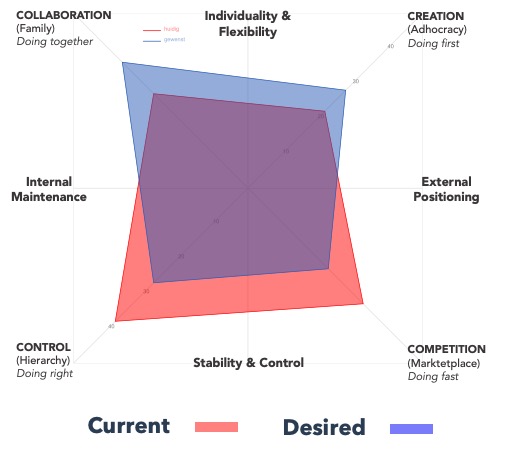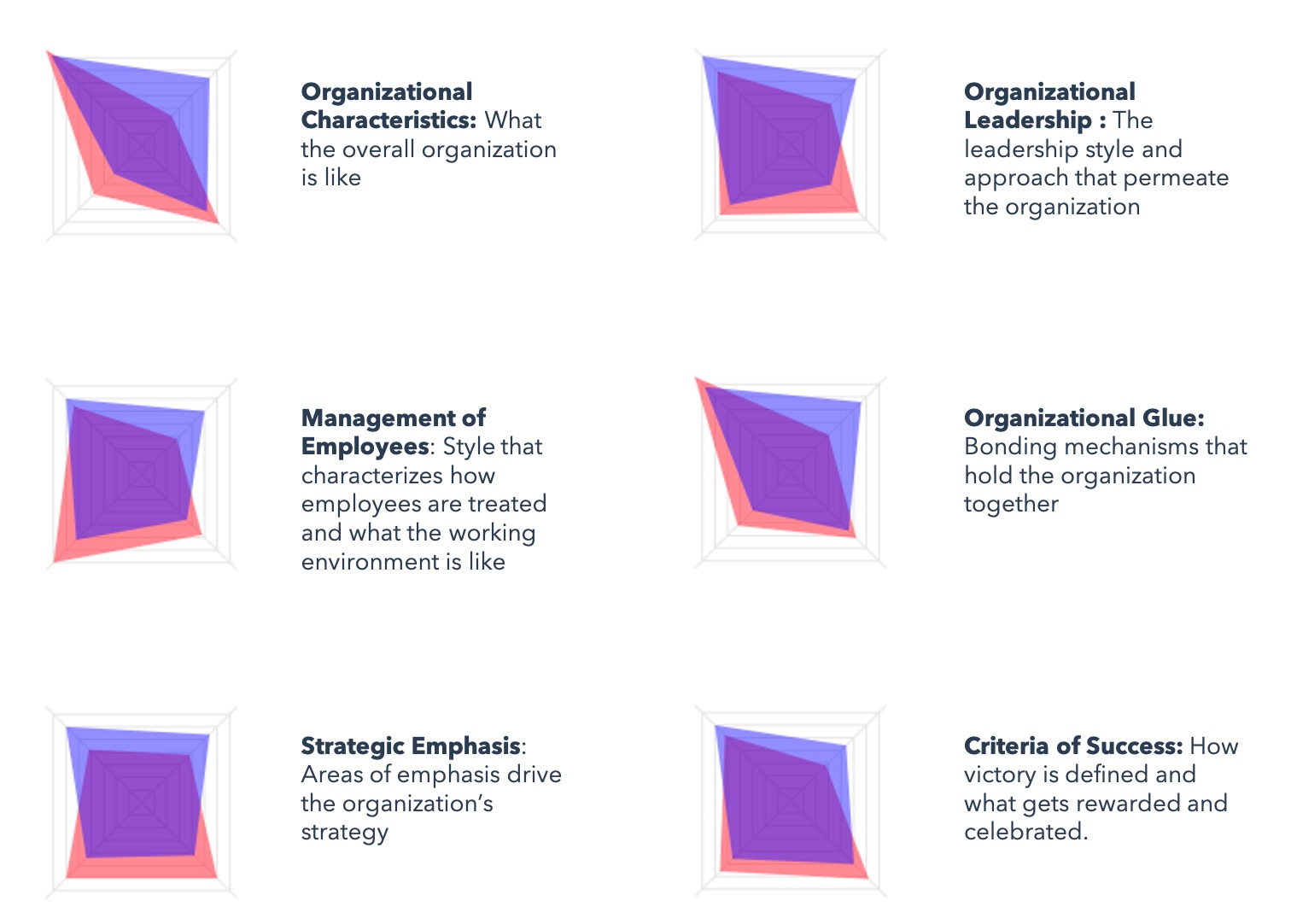Planning for The New-Normal: Creating Resilience in Your Healthcare Organization in Light of COVID-19
“Everything we do before a pandemic will seem alarmist. Everything we do after a pandemic will seem inadequate.” - Michael Leavitt
COVID-19 is the greatest collective challenge we have faced since WWII, and our healthcare workers are battling heroically on the frontlines of this pandemic as healthcare organizations continue to marshal all available resources to support this necessary fight. This is creating unprecedented organizational stress, both acute and long-term, within healthcare organizations.
An organization’s ability to survive, and perhaps even thrive through disruptive events like COVID-19, is directly related to organizational culture. Organizational culture is the underlying beliefs, assumptions, values, and acceptable behaviors that contribute to the unique social and psychological environment of an organization. COVID-19 has fundamentally threatened to introduce negative elements into the organizational culture across healthcare organizations. Limited supplies of personal protective equipment (PPE), constant exposure to a high-stress, uncertain, and volatile physical, social, and psychological environment, and inconsistent and sometimes conflicting messaging from organizational, public sector, and political leaders has, at least in the short-term, altered the contexts in which organizations’ pre-Coronavirus organizational cultures were created. These short-term threats to organizational culture are compounded by the medium to long-term financial strain healthcare organizations are facing, with estimates of between 50% to 75% reductions in topline revenue given the need to cancel elective surgeries, imaging, and other higher-revenue services.
At some point over the next 4 to 12 weeks, as the strategy of flattening the curve pays dividends in reducing infection rates, mortality rates, and the spread of the coronavirus, healthcare organizations will need to balance ongoing COVID-19 responses with reinstating the rest of their healthcare operations. As this ramping up of suspended services will increase the workload on staff, leaders in healthcare must guard against the emergence of toxic cultural trends within their organizations to ensure organizational resilience. While this may seem a daunting task, here are some best practices to help you.
The first response is to triage against the risk of culture toxicity resulting from the high-stress environment frontline healthcare workers are facing. In order to do this effectively, leaders within healthcare organizations must execute the following steps immediately:
1. Perform a diagnostic intake:
There is no such thing as a standard organization or a single approach to maintaining organizational health. Instead, it is important for leaders to collect and access tailored diagnostics that deliver custom insights for their unique teams across the organization. By conducting a systematic cultural analysis, leaders can quickly determine the best approach(es) to managing performance and serving team members (Exhibit 1).
Exhibit 1: Overall cultural analysis: desired & current

2. Adaptive leadership styles:
The second key action is for leaders to adapt their individual leadership styles to those required by their teams based on the intake assessment. For example, in Exhibit 2 below, the leadership culture of the organization was largely defined by stability and control. However, employees indicated that while the efficiency-driven culture was what was needed to operate effectively during crisis, the organization still needed to evolve to become less aggressive and more innovative in order to create new revenue streams and ensure a sustainable work environment.
Exhibit 2: Cultural analysis: difference in leadership preferences between teams

The second response focuses on ensuring resilience within the organization. Healthcare organizations need to take the following steps:
1. Align current and future state organizational culture:
Extensive research shows greater alignment between current and future states of organizational culture leads to increased workplace satisfaction, improved financial performance, and advancement in providing healthy work environments. Given the disruption that COVID-19 is having on existing organizational culture, it is important all healthcare organizations have a good understanding of how their current and future states of culture are defined, and the level of alignment between the two. Tailored diagnostics showing dimensions of organizational culture are required to best understand the desired values and beliefs of an organization. Exhibit 3 shows six dimensions for organizations to measure organizational culture. Taking an evidence-based approach based on tailored diagnostics provides a critical leading indicator on organization culture specifically and broader organizational health in general.
Exhibit 3: Cultural analysis: six content dimensions

2. Continue to perform diagnostic intakes regularly and frequently:
In order to continue to understand and progress the current state of the organization’s culture towards the envisaged future state, healthcare organizations should perform diagnostics intakes frequently and regularly. In normal times, collecting data twice or thrice a year is sufficient as operating conditions are not changing rapidly. Given the uncertainty and volatility of the healthcare industry in the face of COVID-19, conducting diagnostics more frequently, even as often as every week or two across key and/or differentiated employee population sets, is critical so leaders can appropriately adjust policies, processes, and resources quickly.
3. Evolve leadership acumen and adaptability:
Healthcare organizations will need to invest in the development and adaptability of their leadership to enable the successful evolution of their organizational culture. This must include both medical as well as administrative leadership.
Successful leaders and organizations are able to respond to immediate crisis and navigate their organizations through the fog of the initial battle. They are able to prepare their organizations to adapt and thrive in the new-normal by focusing on immediate risk mitigation and on long-term resilience. The acute stresses and long-term pressures caused by COVID-19 threaten to create short-term culture toxicity within healthcare organizations that undermines the resilience of these organizations. Leaders can protect their people and their organization by taking a clinical approach to organizational health. Sound diagnostics can enable informed leadership actions to directly triage the immediate culture toxicity threat. Current and future state alignment, frequent and regular diagnostics, and continuous improvement in leadership acumen and adaptability can ensure organizational resilience for the long-term.
Protect Your People
To protect their healthcare organization, leaders need to integrate organizational culture into their COVID-19 planning and response. For inquiries, please contact Kavi Chawla at kavi@batonglobal.com.
Kavi Chawla (kavi@batonglobal.com), is a Partner of Bâton Global and located in the Des Moines office. Stephen Smith (stephen@wpa.works), is Head of People Analytics at Work and People Analytics (WPA) and is based in Des Moines. Karter Smith (karter.smith@batonglobal.com) is a Consultant for Bâton Global and located in the Des Moines office.
Sign UP to receive related Insights
Related Case STudies
View case studiesSchedule Your Session Today
Enter your information below and our team will contact you.











